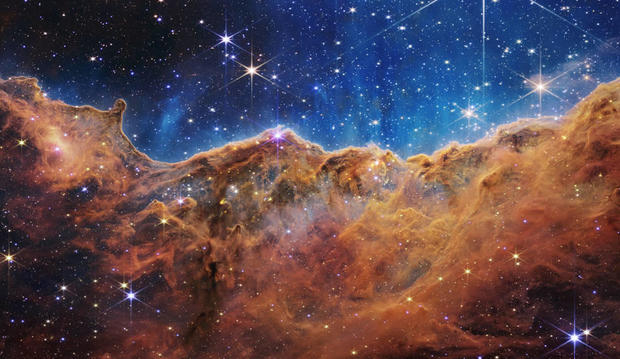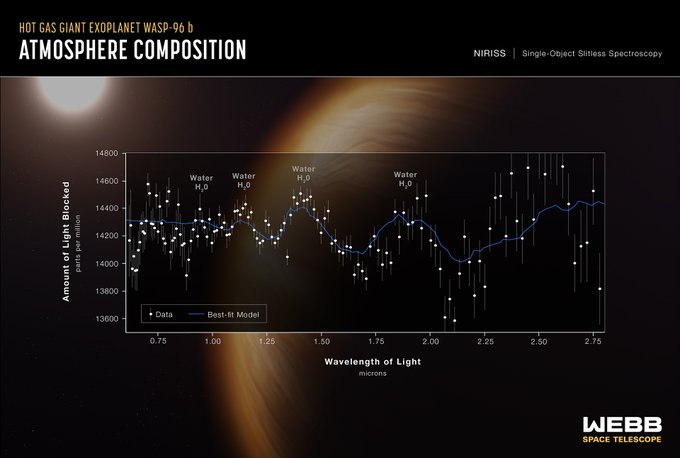Wonder of Wonders -- Behold the Universe!
"From the data I've seen so far, from the work we've seen in commissioning and then this first week of science, yeah, this is going to be revolutionary.""These are incredible capabilities we've never had before."Jane Rigby, Webb operations project manager, Goddard Space Flight Center, Greenbelt, Maryland."Those releases represented five days of observation with this observatory.""And they include something that is a deeper infrared image than has ever been taken in history, deeper than Hubble images that required weeks to acquire. That was done in half a day with Webb."Randy Kimble, Webb project scientist, Goddard."I am so thrilled, and so relieved.""It's just impossible to convey how hard it really was. We risked so much to say we're going to go do this, and it's so near impossible. But we did it."John Mather, Nobel Prize winner, senior scientist, Webb project.
 |
 |
Clouds on another world. @NASAWebb Webb captured the signature of water on giant gas planet WASP 96-b, which orbits a star 1,150 light-years away. For the first time, we've detected evidence of clouds in this exoplanet's atmosphere: nasa.gov/webbfirstimages #UnfoldTheUniverse |
"[The initial deep look unveiled on July11 is] proof of concept ... whetting our appetite for the record-breaking results we now know will come from this exceptional facility."Heidi Hammel, planetary astronomer, scheduled to use the Webb"[The telescope, the successor to the Hubble which is still in operation] has capabilities that far surpass my most optimistic dreams.""The capabilities of Webb are truly out of this world."Garth Illingworth, astronomer, University of California, Santa Cruz
 |
| Stephan's Quintet Credits: NASA, ESA, CSA, and STScI |
This initial first scrutiny deep into the universe by the Webb has excited the appetite of the world of astronomy for what is yet to come; revolutionary views of the universe crossing cosmic distances with unrivalled resolution. The coming months will transform what is currently known and assessed as an expansion of the understanding of the most basic rules and origin of the universe will gradually be resolved.
Now the formation of the earliest galaxies will be enabled by the Webb toward more intensive study along with the evolution of the expanding universe. Even our own solar system, hosting small worlds we hardly are aware of beyond the orbit of Neptune will come under scrutiny as nature's genius is examined and understood in time and space.
 |
| SMACS 0723 Credits: NASA, ESA, CSA, and STScI |
Labels: Astronomy, James Webb Telescope, Photographs, Universe

0 Comments:
Post a Comment
<< Home